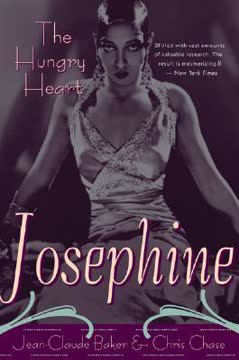Key Takeaways
1. From St. Louis Slums to Parisian Stardom
"Show business is full of mysteries, but few are as puzzling as how Josephine Baker made it from a shanty neighborhood along the Mississippi to the City of Light."
A childhood of hardship. Born Freda J. McDonald in 1906 in a St. Louis hospital for prostitutes, Josephine's early life was marked by extreme poverty, racial discrimination, and family instability. She was often passed between relatives, working as a child maid from age seven, and experienced the trauma of the East St. Louis race riots from afar, which deeply impacted her. Her mixed-race identity, lighter than her mother and siblings, created a complex dynamic within her own family, where she felt both envied and alienated.
Early theatrical escape. Josephine found solace and purpose in the local Booker Washington Theatre, where she honed her natural talent for comedy and dance, mimicking performers and developing her unique, cross-eyed, rubber-legged style. Despite her mother's disapproval of show business, Josephine married at thirteen (a union that quickly ended in violence) and soon joined touring black vaudeville troupes, enduring the harsh "T.O.B.A. circuit" where conditions were often deplorable but her skills flourished. This period, though difficult, was her crucible, shaping her into the performer who would soon captivate Europe.
Parisian explosion. Her life irrevocably changed in 1925 when she was recruited for "La Revue Nègre" and sailed to Paris. On opening night at the Théâtre des Champs-Élysées, her "Danse de Sauvage"—performed almost nude with a few feathers—ignited a sensation. Critics and audiences were mesmerized by her raw energy, humor, and uninhibited sexuality, instantly transforming the "ugly duckling" from St. Louis into the "Black Venus," a symbol of the city's "Années Folles" and an overnight international star.
2. The Architect of Her Own Image
"She herself had created that 'magnificent dark body,' out of will and her need to be noticed."
Constant reinvention. Josephine was a master of self-creation, constantly reshaping her narrative and physical appearance to suit her ambitions and the desires of her audience. From her early days, she fabricated details about her parentage and past, burning old photos and documents to erase inconvenient truths. This impulse to control her story extended to her stage persona, evolving from the "savage" dancer to the elegant chanteuse, always with an eye on what would captivate.
Physical transformation. Her body was her instrument, and she meticulously sculpted it through relentless exercise, developing the muscular physique that defied conventional beauty standards yet enthralled audiences. She experimented with skin lighteners and hair straighteners, driven by a complex desire to fit in while simultaneously embracing her exotic appeal. This constant physical and performative reinvention was a testament to her ambition and her understanding of the theatrical power of transformation.
Strategic self-mythologizing. Josephine understood that fame required a compelling story, and she was a prolific storyteller. Whether claiming to be a countess, a Spanish dancer's daughter, or a victim of American racism, she wove elaborate tales that blurred the lines between fact and fiction. This strategic self-mythologizing, though often frustrating for biographers, was integral to her mystique and allowed her to transcend her humble origins, becoming a legend in her own lifetime.
3. The Complex Role of Her Managers and Lovers
"Pepito managed her affairs in a sensible manner. He always appeared calm, and checked the outbursts of his protégée. They complemented each other."
Pepito's transformative influence. Giuseppe Abatino, known as Pepito, entered Josephine's life as a lover and quickly became her indispensable manager. He was instrumental in refining her image, teaching her French, etiquette, and guiding her artistic evolution from a comedic dancer to a respected chanteuse. Their relationship was a complex blend of romance, professional partnership, and control, with Pepito often acting as her protector and strategist, shielding her from financial pitfalls and public missteps.
A symbiotic, yet volatile, partnership. While Pepito provided structure and vision, Josephine's impulsive nature and insatiable desire for attention often led to conflict. He managed her finances, negotiated contracts, and even co-authored her early memoirs, but his efforts to control her personal life and public persona were met with resistance. Their dynamic was a constant push and pull, with Josephine benefiting immensely from his guidance while chafing under his possessiveness and jealousy.
The aftermath of his death. Pepito's sudden death in 1937 left a profound void in Josephine's life and career. Stripped of his shrewd management, she struggled with financial mismanagement and legal battles, as many of her assets were in his name. His absence highlighted the extent of his influence, and while she continued to achieve success, she often lacked the strategic foresight and steady hand that Pepito had provided, leading to recurring financial crises and a more chaotic personal life.
4. A Heroine of the French Resistance
"France made me what I am,' she said. 'The Parisians gave me their hearts, and I am ready to give them my life.'"
Unwavering patriotism. With the outbreak of World War II, Josephine, who had adopted France as her homeland, immediately pledged her loyalty to the Free French cause. Her deep gratitude for the acceptance she found in Paris, a stark contrast to the racism of America, fueled her fervent patriotism. She saw the war not just as a political conflict but as a personal fight for the values of freedom and equality that France represented to her.
Covert intelligence work. Recruited by Jacques Abtey of the Deuxième Bureau (French military intelligence), Josephine became an "Honorable Correspondent." Her celebrity provided the perfect cover for espionage:
- She attended diplomatic receptions, gathering information from high-ranking officials.
- She transcribed intelligence onto her sheet music using invisible ink.
- She smuggled documents pinned to her underwear, leveraging the unlikelihood of a famous performer being searched.
- She used her fame to secure visas and safe passage for agents and refugees across occupied territories.
Courage under fire. Josephine's wartime service was marked by immense courage and personal risk. She traveled extensively across North Africa, the Middle East, and Europe, entertaining Allied troops, boosting morale, and continuing her intelligence work even while gravely ill. Her unwavering commitment earned her the Croix de Guerre and the Légion d'Honneur, solidifying her status as a national heroine and a symbol of French resistance against Nazi oppression.
5. America's Ambivalent Embrace
"I don’t want to be refused in a hotel."
A triumphant, yet fraught, return. Josephine's return to America in 1935 for the Ziegfeld Follies was met with a mix of anticipation and hostility. While she was a celebrated star in Europe, the deeply segregated United States was not ready to embrace a black woman who had achieved such international fame and sophistication. Her initial experiences were marked by racial slights, including being refused accommodation in prestigious hotels, a humiliation that deeply wounded her.
Clash of cultures and expectations. American audiences and critics, particularly in New York, found her Europeanized persona "too refined" or "not black enough," preferring the "savage" image she had shed. Her performances in the Follies were met with lukewarm reviews, and she faced professional jealousy and racial prejudice from both white and some black peers. This period was a stark reminder of the racial barriers she had escaped, and the deep-seated prejudices that still permeated American society.
Activism and backlash. Despite the personal and professional setbacks, Josephine became an outspoken advocate for civil rights. She challenged segregation in hotels and restaurants, spoke out against racial injustice, and used her platform to highlight the plight of black Americans. This activism, however, came at a cost:
- She faced a bitter public feud with powerful columnist Walter Winchell, who attacked her character and past.
- Her career in the U.S. was severely impacted, with bookings canceled and her reputation tarnished by accusations of anti-Americanism.
- She was investigated by the FBI and the State Department, who viewed her as a "troublemaker" and a potential Communist sympathizer.
This period, though painful, solidified her commitment to fighting for equality, transforming her from a performer into a passionate civil rights crusader.
6. The Universal Mother's Grand Vision
"I want to adopt five little two-year-old boys, a Japanese, a black from South Africa, an Indian from Peru, a Nordic child, and an Israelite; they will live together like brothers."
A dream of global unity. Disillusioned by the persistent racism in America and the devastation of war, Josephine conceived a grand humanitarian project at her château, Les Milandes, in France. Her vision was to create a "Capital of Universal Brotherhood," a living experiment in racial harmony. She planned to adopt children from diverse backgrounds, raising them as a single, loving family, demonstrating that people of all races and religions could coexist peacefully.
The Rainbow Tribe. Beginning in the mid-1950s, Josephine adopted twelve children from around the world, whom she affectionately called her "Rainbow Tribe." Each child represented a different nationality, race, or religion, embodying her ideal of global unity:
- Akio (Japanese)
- Janot (Japanese)
- Jari (Finnish)
- Luis (Colombian)
- Jean-Claude (French, renamed from Philippe)
- Moïse (French, renamed from Alain Jean-Claude, and designated Jewish)
- Marianne (Algerian)
- Brahim (Algerian)
- Koffi (Senegalese)
- Mara (Venezuelan Indian)
- Noël (French, found in a garbage can)
- Stellina (Moroccan)
This ambitious project became the central focus of her later life, overshadowing her performing career.
A public spectacle. Les Milandes was transformed into a tourist attraction, with visitors paying to see the château and observe the Rainbow Tribe through a picture window. Josephine believed this public display was essential to her mission, allowing the world to witness her vision of brotherhood. However, this also exposed the children to constant scrutiny and, at times, exploitation, blurring the lines between genuine humanitarianism and theatrical performance.
7. The Price of an Ideal
"Ideals cost a lot of money," said Josephine.
Financial ruin. Josephine's grand vision for Les Milandes, coupled with her chronic financial mismanagement and extravagant spending, led to immense debt and eventual bankruptcy. She poured millions into renovating the château, building hotels, restaurants, and an amusement park, often without proper planning or financial oversight. Her belief that "God would provide" and her disdain for conventional business practices meant she consistently overspent and failed to secure stable funding.
Exploitation and betrayal. Surrounded by a large staff, many of whom exploited her generosity and lack of business acumen, Josephine was frequently defrauded. Her trust in others, combined with her own impulsiveness, made her vulnerable to theft and poor advice. Even her husband, Jo Bouillon, who initially tried to manage the estate, eventually left, overwhelmed by the financial chaos and her refusal to compromise.
Personal and familial strain. The relentless financial pressure and the chaotic environment at Les Milandes took a heavy toll on Josephine and her family. She was constantly touring to earn money, leaving the children in the care of a revolving door of nurses and her aging sister, Margaret. The children, in turn, struggled with a lack of stability, discipline, and a clear sense of identity, often rebelling against their mother's grand, yet often absent, presence. The dream of universal brotherhood became a source of profound personal suffering.
8. Enduring Resilience and Final Triumphs
"We always believed she was immortal."
Unwavering spirit. Despite facing bankruptcy, eviction from Les Milandes, declining health, and professional setbacks, Josephine's spirit remained indomitable. She continued to perform, often in smaller venues, driven by an unshakeable belief in her mission and her ability to connect with audiences. Her resilience was legendary, allowing her to bounce back from adversity with a renewed sense of purpose, always seeking new opportunities to share her message and secure her family's future.
Triumphant comebacks. Even in her later years, Josephine orchestrated several spectacular comebacks, defying age and illness. Her 1973 Carnegie Hall performance, where she captivated a new generation of American fans, and her 1975 Bobino show in Paris, celebrating 50 years on stage, were testaments to her enduring star power. These performances, often infused with her life story and humanitarian message, were met with overwhelming adoration, proving that her magic had not faded.
A blaze of glory. Josephine's final performance at Bobino was a culmination of her life's work, a poignant blend of glamour, vulnerability, and unwavering conviction. She died just days after the triumphant opening, having achieved a final, resounding victory on the Parisian stage. Her death, mourned by thousands, cemented her legacy not only as an iconic entertainer but as a symbol of courage, resilience, and a lifelong advocate for human dignity, leaving behind a complex, yet inspiring, story.
9. The Author's Personal Quest
"I think we were crying not for Stellina, but for the child in each of us who was forever gone with the Sandman."
A son's search for understanding. Jean-Claude Baker, one of Josephine's adopted sons, embarked on a decades-long quest to understand the complex woman he called "Maman." His journey began after her death, driven by a mix of love, frustration, and a desire to reconcile the public legend with the private reality. He meticulously researched her life, interviewing countless individuals who had known her, piecing together a mosaic of memories and contradictions.
Unveiling the hidden truths. Jean-Claude's research revealed the many layers of Josephine's fabricated past, her struggles with identity, and the profound impact of her childhood traumas. He discovered the discrepancies in her autobiographies, the true nature of her relationships, and the immense personal cost of her public persona. This quest was not just about historical accuracy but about coming to terms with his own relationship with a mother who was both loving and distant, generous and demanding.
A shared vulnerability. Through his intimate connection with Josephine, particularly in her later years, Jean-Claude gained a unique perspective on her inner world. He witnessed her insecurities, her moments of despair, and her relentless drive. His own story, as a "bastard" seeking belonging, mirrored some of Josephine's deepest struggles, leading to a profound empathy. His book is not merely a biography but a deeply personal exploration of identity, memory, and the enduring legacy of a woman who, despite her global fame, remained, in many ways, a lost child.
Last updated:
Review Summary
The Hungry Heart receives mixed reviews, with an average rating of 3.77/5. Readers praise its comprehensive coverage of Josephine Baker's life, highlighting her groundbreaking career, civil rights activism, and complex personality. Many appreciate the author's unique perspective as Baker's adopted son. Some criticize the book's length, repetitive sections, and occasionally disjointed narrative. While most find Baker's story fascinating, opinions vary on the writing quality and the author's personal interjections throughout the biography.
Similar Books
Download PDF
Download EPUB
.epub digital book format is ideal for reading ebooks on phones, tablets, and e-readers.









